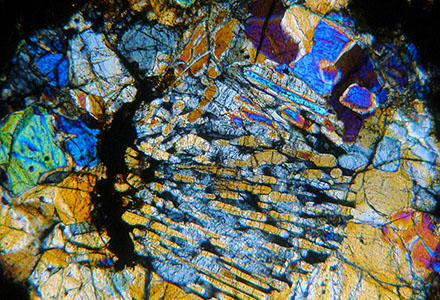| |

Index to Resources

Meteorites
of
North Carolina
|
Spring 2016 Calendar
Subject to change as a result of breaking meteoritic events, conference papers, journal articles, field and laboratory opportunities and the interrelatedness of topics.
Grading is based on demonstrated engagement with and mastery of the material. Weekly written and lab challenges will be based upon presentations, readings and research. They will include simulations, laboratory analysis and classroom presentations. There will also be several exams including a first and second mid-term.
|

Asteroid 113355 "Gessler"
(image is of Ida)

Chelyabinsk fireball smoke trail image
2/15/2013 (Click to enlarge).
Check our references for videos.
(older documentation with questionable links)
|
| |
|
|
| |
Tentative Weekly Topics |
Related Images |
|
Week 1
|
January 20
INTRODUCTIONS
Meteoroids, meteors and meteorites.
Though all I knew of the rote universe were those Pleiades loosed in December
I promised you I‘d set them to verse so I'd always remember
That the meteoroid is a source of the light
And the meteor's just what we see
And the meteorite is a stone that's devoid of the fire that propelled it to thee
And the meteoroid’s just what causes the light
And the meteor's how it's perceived
And the meteorite’s a bone thrown from the void that lies quiet in offering to thee
"Corrected" from Joanna Newsom’s, “Emily” (2006)
In this course you will be asked to respond to readings and do research using resources in the library, on SAKAI, in texts and on the Internet. You will also be expected to look at rocks as hand secimens by eye and under the inspection microscope and to examine thin sections under the petrographic (polarizing) microscope in order to describe and understand what you are seeing in drawings, photographs and in writing. Challenges and exams will require you not just to respond to textual questions, but also to visually recognize meteorite types and their components from actual specimens as well as photographs.
Please note our RESOURCES and password protected NC METEORITES and REFERENCES pages.
Introductory terminology that you need to know:
Falls vs. finds and their correlation with different types of meteorites.
Traditional vs. genetic classification.
Chondrules and chondrites.
Achondrites and primitive achondrites.
Stony irons and irons.
Equilibration: unequilibrated vs. eqilibrted.
Differentiation: undifferentiated vs. differentiated.
Fusion crust.
Chemical type vs. petrographic type.
Shock and weathering.
Orientation: oriented vs. unoriented.
Calcium-aluminum inclusions (CAIs).
Nickel-iron inclusions.
Specimens of iron, stony-iron, achondrites and chondrites were passed around in class.
For next week:
a) Video of the Chelyabinsk meteor.
Go to our references page and then to the collection of videos. Please review and take notes on each of the videos (except for the two compilations). What features of that event are evident in the recordings? What can you discern about the dynamics of the fall? What might we be able to learn from a more complete collection of videos if we knew the time they were recorded and their exact location? What is the range of reactions from people and animals? What information can you find on the Web that results from this kind of analysis? Post your results (images, .docs, .txts, .pdfs, etc.) on SAKAI.
b) Meteorites of North Carolina. A history of the 29 reported specimens.
Begin your research with the Meteoritical Bulletin Database and then expand it with searches on eBay and the Internet. Look not only for scientific information but cultural information such as history, politics andavailability and price in the marketplace. Why have no meteorites been reported in NC for 80 years? Suppose that we want to be the first to report a meteorite from North Carolina in almost a century. Sign up for one of the 29 NC meteorites. Research it and collect ALL the historic and current references and photos you can find. If there is next to nothing known about it, report on another nearby meteorite in Virginia or South Carolina. How would you go about finding additional fragments of that meteorite? Be specific. How would you go about finding a new meteorite that is not related to any of the previously known meteorites? Be specific. Post your work (images, .docs, .txts, .pdfs, etc.) on SAKAI.
The following references will help:
Grady CATALOGUE OF METEORITES
sakai.duke.edu
Buchwald HANDBOOK OF IRON METEORITES
evols.library.manoa.hawaii.edu/handle/10524/33750/
|
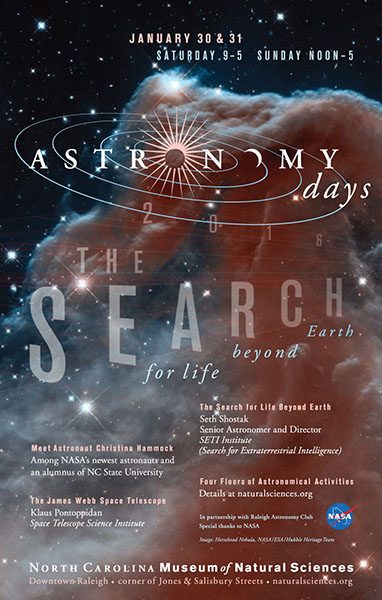
|
|
Week
2
|
January 27
Participant discussion of Chelyabinsk meteor event and presentations on NC meteorites.
This weekend:
RALEIGH MUSEUM OF NATURAL SCIENCES "ASTRONOMY DAYS?"
There will be several exhibits of meteorites: My own collection, a collection on loan to the museum and the museum's own collection of several NC meteorites. There will also be talks and exhibits by NASA and JPL.
Reading assignments:
Easy reading:
Keppler, "Chelyabinsk - Chronology of an Exceptional Fall."
Brandstatter, "Brief History of Meteorites."
Smith, METEORITES (pages 7-15).
Brandstatter, METEORITEN METEORITES (pages 7-43).
Zanda, METEORITES, THEIR IMPACT ON SCIENCE AND HISTORY (pages 7-29)..
Technical reading:
Marvin, "Origins of Modern Meteorite Research."
Written assignment:
Pick any recent meteorite fall (your choice) and provide a report on the event, its scientific, cultural and historical importance. (no more than 3 pages single spaced plus multiple references including photos)
|
|
Week
3
|
February 3
(instructor will be in Tucson, AZ)
Ashley, Caroline and/or Thomas will be helping out.
In Class Video Screenings:
- Two years ago at Tucson, a French TV team interviewed two of the leading meteorite dealers, Bob Haag and Mike Farmer. This surprisingly candid footage reveals the excitement that many of us in the meteorite community share, whether we are scientists, searchers, collectors or the lay public at large. (2013, 15 min).
- Dudley Observatory, THE SIKHOTE ALIN METEORITE (1956, 20 min).
- Mike Farmer and Rob Wesel, PARK FOREST METEORITE NEWSREELS, THE COMPLETE FIRST DAY ARCHIVE (2003).
Reading assignments:
Grady, ATLAS OF METEORITES, Introduction.
Standing popular reading assignments for the course:
Smith, METEORITES.
Brandstatter, METEORITEN / METEORITES.
Zanda, METEORITES, THEIR IMPACT ON SCIENCE AND HISTORY.
Written assignment:
Pick any recent meteorite fall (from your home state, province, country) and provide a report on the event, its scientific, cultural and historical importance. (no more than 3 pages single spaced plus multiple references including photos) |

|
| |
|
Week
4
|
February 10
Tucson...
Did a meteorite kill a man in India?
ncmeteorites.blogspot.com
Participant presentations.
Review and discussion of Grady's "Introduction."
Impact Craters:
Sign-Up List (.pdf):
Pick four craters from the Earth Impact Database that no one else has chosen and create an anaglyphs of each.
Visit the Earth Impact Database http://www.passc.net/EarthImpactDatabase/index.html
Read the background scientific information for each. Study their images, note their sizes and contours.
Find each crater on GoogleEarth. Expand the image to full screen.
Zoom in to the crater leaving a border around it of about the crater's radius. Click View/Reset/Tilt and Compass.
(Pressing Alt-PrntScr will capture your display image to the ClipBoard from which you can paste it into PhotoShop.)
Capture two images of the crater:
When you move the image to the left and right use the arrow keys.
1) The right-eye image by moving it to the left side of the screen. Be sure to click View/Reset/Tilt and Compass.
Paste it into PhotoShop, adjust "levels" for good contrast and save it as the "right-eye image" of your crater.
2) The left-eye image by moving it to the right side of the screen.
Be sure to click View/Reset/Tilt and Compass.
Paste it into PhotoShop, adjust "levels" for good contrast and save it as the "left-eye image" of your crater.
Now copy the Red Channel of the left-eye image (that was on the right edge of the screen) and paste it into the Red Channel of the right-eyed image (that was on the left edge of the screen).
Adjust
and align the pasted-in Red channel centering to match that of the Blue and Green channels.
You may wish to slightly crop your image for neatness.
You now have a color (red/cyan) anaglyphic stereo image of the crater.
Check your image with red/cyan glasses to produce a professional product.
If the 3d effect is inverted, make a new anaglyph in the opposite manner.
If the 3d effect is too exaggerated, start over with less parallax (not so far left and not so far right).
If the 3d effect is negligable, start over with more parallax (zoom out and use extreme left and right images).
Some craters have been shaved flat by glaciers and will not show much topography.
Label each image: the left-eye image, the right-eye image and the red/cyan anaglyph.
Drop each image into the appropriate folder on SAKAI.
On a separate word document, briefly note the diagnostic features that distinguish it from a volcanic crater.
This is due on SAKAI on Tuesday before 1:00 p.m..
Read those sections in your texts which deal with craters, impact features and impactites.
Smith, METEORITES, pp. 29-41.
Brandstatter, METEORITEN / METEORITES, pp. 212-241.
Zanda, METEORITES, THEIR IMPACT ON SCIENCE AND HISTORY, pp. 30-49. |
|
Week
5
|
February 17
Carbonaceous Chondrites: Planetary Meteorites by Norbert Classen.
Rumuruti and Enstatite Chondrites, Metachondrites: Northern Arizona Meteorite Laboratory by T.E. Bunch and J.H. Wittke.
Fosterite, Kakangari and Rumuruti Chondrites: Astronomical Research Network by Kenneth Regelman.
CHONDRITE CHARACTERIZATION. I will reiew the eleven (11) charts of chondrite data (located on our private "Meteoritics References" link) and then pass around specimens which I'd like you to examine closely with a loupe (I will pass out loupes and show you how to use them). Compare the actual specimens that you see with the photos and descriptions in your text. It is sometimes difficult to identify meteorites without laboratory testing, but it is necessary to try. Take notes on the classification, equilibation, weathering, shock, flight markings fusion crust and details of the clasts and inclusions. Are the chondrules round or squashed, are they barred olivine, radial pyroxens or porphoritic. Some types may be recognized by their fusion crust, by their broken faces or by a "window" ground into them. With some meteorites, only a thin section will enable you to identify what type they are. But even with a thin section identifications may be elusive and may require a microprobe for more detailed analysis. Exams in this course will require you to identify actual stones with loupes and relate to what you see. We want you to be able to recognize specimens as meteorites or "meteor-wrongs," and if they are meteorites, to be able to characterize them. Please rewrite your characterization notes in Word and turn them in on SAKAI.
PowerPoints will be posted to SAKAI / Resources.
FOR FEBRUARY 18: The Chondrite Market: Your text outlines the major types of chondrites. Please search eBay and the Web to get current prices on each of those types (in $ per gram). You will note that falls command higher prices than finds, unweathered than weathered, storied than unstoried and rare than common. Check the prices for several of each type (to eliminate sampling error) and provide a table of prices to summarize your research. How were the meteorites acquired? Provide the URLs for the sites you quote.
|
|
Week 6
|
February 24
Midterm Exam
|
|
Week
7
|
March 2
Review of Grady's Introduction
Figures 01-01 through 01-05, 01-14 and 01-15.
- Jing Niu's video introduction to optical petrography.
Exit at 7:40
- Robert Clark's video of an unidentified thin section rotated under crossed-polars.
- Pvermees' video of quartz in granite rotated under crossed-polars showing undulose extinction.
- Tim Gregory's animated .gif Video of quartz in granite rotated under crossed-polars showing undulose extinction.
- Chanakan Ketthong's video of a thin section containing olivine and pyroxene rotated under crossed-polars.
- Ann Black's IMPACTIKA list of thin sections available.
- Ann Black's IMPACTIKA list of thin sections sold.
FOR MARCH 9, using please use Ann Black's images of chondrite thin sections:
Using PhotoShop, construct an annotated visual catalog illustrating the various kinds of chondrules and inclusions, chondrite classes and petrologic types.
FOR MARCH 9, please read up on chondrites:
Alan Rubin's "Secrets of Primitive Meteorites."
Monica Grady on Carbonaceous, Ordinary, Enstatite and Rumurutiite and Kakangari chondrites, chapters 2, 3, 4 and 5 respectively.
Smith, METEORITES, pp. 47-61.
Brandstatter, METEORITEN / METEORITES, pp. 72-83, 92-115.
Zanda, METEORITES, THEIR IMPACT ON SCIENCE AND HISTORY, pp. 50-67.
|
xx

|
Week
8
|
March 9
WORKSHOP ON CHONDRITES:
a) Hand specimens: Note features of the fusion crust, weathered surface, and saw-cut "window," when each was evident.
b) Thin sections under Zeiss Jena polarizing microscopes: Note microscopic features such as chondrules, matrix, nickel-iron, troilite and other crystals and inclusions (e.g. CAIs) when present.
c) Small pea-sized chondrites: Window several using diamond hones and silicon carbide paper of 1000, 1500 and 2000 mesh.
Using you cell phone camera, and/or drawings and verbal descriptions, characterize the specimens that you investigated in as much detail as may be relevant to their recognition: their class, weathering, shock and other features of their history or possible significance. Make sure you also include the identification of the specimen(s) you examine.
During the Break:
Look for meteorites if you find yourself in the desert.
Upload your notes on our WORKSHOOP ON CHONDRITES to SAKAI. |
|
| |
March 12-20 / SPRING BREAK
|
Week
9
|
March 23
ORBITAL DYNAMICS
Rogue planets...
Wikipedia
National Geographic, "A Guide to Lonley Planets."
"Rogue Planets, Loners of the Universe." (3m20s)
"Planet to Planet Scattering." (44s)
"Solar System Evolution: The Nice Model." (1m27s)
"Birth of the Solar System." (47m29s) From 20 planets to 8 and the Nice model.
break
Solar System resonances. How the influence of multiple massive objects affects their orbits. Modeling the resonances of moons, Kirkwood Gaps, Trojan asteroids and ring structures. Hands-on experimentation with a complex systems multiagent qualitative model (gravitation has been exaggerated).
For March 30th:
Flocking/Orbits 38. We will review the operation of this simulation in class. It will accommodate up to 700 asteroids and is available here online. Download it to your Temporary file (or the antivirus will delete it). The application will run on any PC. Sorry, it will not work with Macs. Hands-on experimentation with a complex systems multiagent model.
Wikipedia on retrograde planets (asteroids).
Experiment: Is there any difference in the resulting "stable" orbits in runs that are evolved randomly (Evolve Ran) versus those that are evolved clockwise (Evolve CW) under rule #20?
a) Run each simulation to the same number of iterations (at least 100,000).
b) Stop the simulation. Save the agents with the name of the run.
c) Change space to infinite and clear the screen.
d) Analyze the moons of Jupiter and/or the asteroids in the belt for prograde versus retrograde motion.
e) Are the results the same? How so? How not?
The Chaos of Swapping Rocks. Modeling the paths of asteroids and debris freed from parent bodies by collisions. Calculating the time taken for meteoroids to reach the Earth and other planets from their parent bodies.
"Swapping rocks: The transfer of ejecta between the planets.” VHS (72m). We may watch this on a later day.
Please read Brett Gladman's three articles on SAKAI Resources.
Draft a review and critique of his argument, methodology
and presentation of results (both verbally and graphically)?
Please submit the results of your simulation experiments.
|
|
Week
10
|
March 30
Deadline for Withdrawing
WORKSHOP ON ACHONDRITES:
|
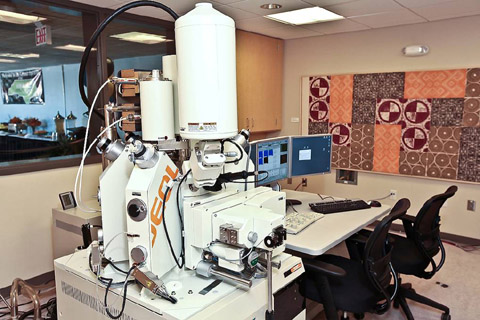 x
xxxxxxxNick Foster's Microprobe at SNC-MIC x
xxxxxxxNick Foster's Microprobe at SNC-MIC |
Week
11
|
April 6
WORKSHOP ON IRONS:
|

|
Week
12
|
April 13
Here are the results of our midterm exam. There is still a lot of material yet to be graded and your course project will count significantly. So everyone has ample opportunigy for improvement.
Prepare your course project as a digital document (word.doc, PowerPoint, Prese, etc.) with ample content for a detailed 30 minute presentation. What you will present in class will be a 10-minute summary. Your presentation in class and your complete digital document will be what your grade will be based upon. I will ask those who are not presenting on that day to provide feedback (insightful comments and questions) on those who are presenting. So your attendance is required.

Newly arrived from Tucson: Petra Haffter's ROCKS OF AGES / METEORITES - VISITORS FROM BEYOND. Blue-Ray (2015) 53 minutes. |
|
Week
13
|
April 20
If you are not presenting today, please take notes on today's presentations. Choose five of the presentations and provide two or three thoughtful and insightful questions and/or comments on each of the five speakers. Don't forget to name the speaker and the title of the presentation.
Course Comprehensive Paper replaces the "Final Exam."
Your presentation should be rehearsed and timed to ten minutes.
However, your content should form the basis of a longer talk.
Typically, at a conference, you prepare a research paper which is much too long to present to your audience in its entirety, so your presentation to them is much shorter. Your presentation is, in effect, a summary, a "teaser" for the audience, enticing them to look more deeply into your work at a later time.
So prepare a PowerPoint, Presi or other digital presentation which illustrates the depth of your research, knowing that since you only have ten minutes to show it to your audience you will have to briefly summarize what you've done. I will be the one who is enticed to look more deeply into your work, so please provide me with the "full version" of the intellectual investigation into your chosen topic. If you like you may prepare two versions, a long one and an abbreviated one.
Participant presentations:
- Addison Winston
- Ashley Gartin
- Caroline Murphy
- Gwen Hawkes
- Frannie Sensenbrenner
- Grace Li
- Eileen Cheng
- Thomas Gettliffe
- Ethan Heerwagen
- Jason Lapidus
- Vincent Lin
- Nan Pang
|
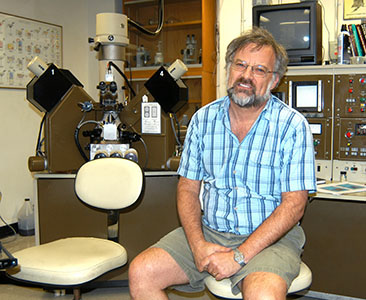 Alan Boudreau at Duke's facility.
Alan Boudreau at Duke's facility. |
Week
14
|
April 27
If you are not presenting today, please take notes on today's presentations. Choose five of the presentations and provide two or three thoughtful and insightful questions and/or comments on each of the five speakers. Don't forget to name the speaker and the title of the presentation.
Course Comprehensive Paper replaces the "Final Exam."
Your presentation should be rehearsed and timed to ten minutes.
However, your content should form the basis of a longer talk.
Typically, at a conference, you prepare a research paper which is much too long to present to your audience in its entirety, so your presentation to them is much shorter. Your presentation is, in effect, a summary, a "teaser" for the audience, enticing them to look more deeply into your work at a later time.
So prepare a PowerPoint, Presi or other digital presentation which illustrates the depth of your research, knowing that since you only have ten minutes to show it to your audience you will have to briefly summarize what you've done. I will be the one who is enticed to look more deeply into your work, so please provide me with the "full version" of the intellectual investigation into your chosen topic. If you like you may prepare two versions, a long one and an abbreviated one.
Participant presentations:
- David Yan
- Yazhou Lee
- Katie Dukovich
- David Croft
- Torrey Mayes
- Rhan Dickerson
- Stan Fox
- Morgan Wang
- Ryan Chavis
- James Findlay
- Jack Lucas
- Dayou Zhuo
|
|
NO FINAL EXAM
|
Course Comprehensive Paper Due Today (no extensions!)
|
|
| |
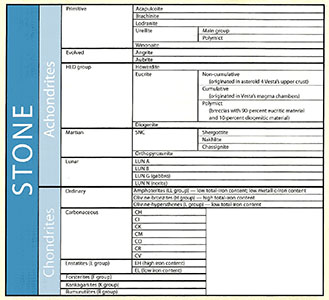 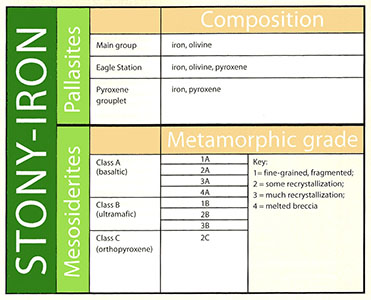 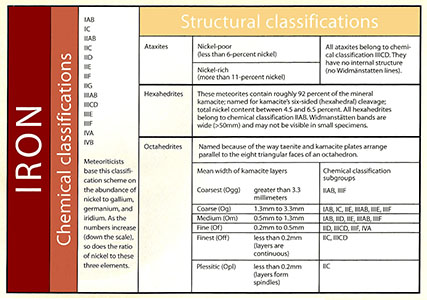
|
| |
!!! Have a Great Summer / Find Lots of Meteorites !!! |
|






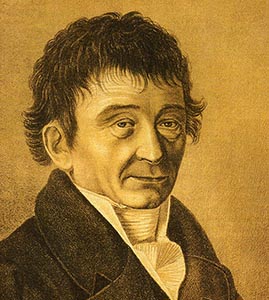
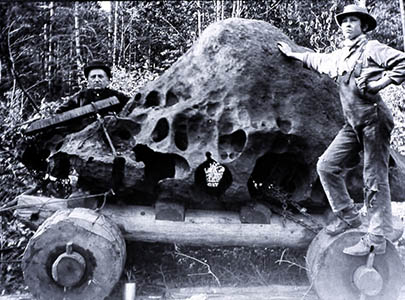
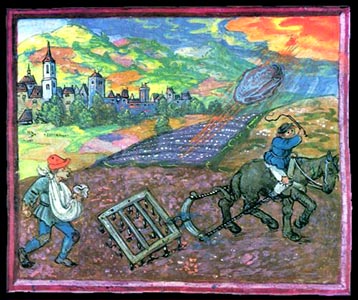



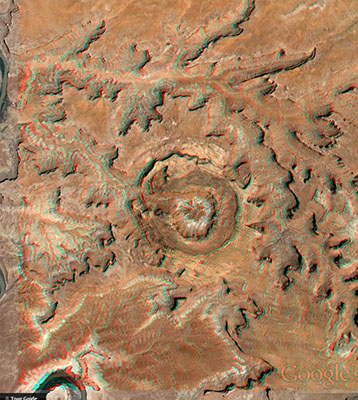 xxx
xxx
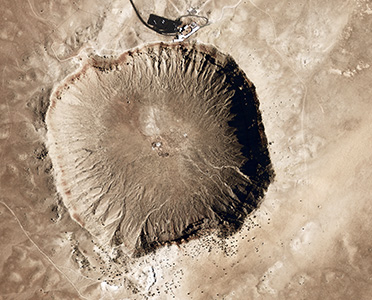
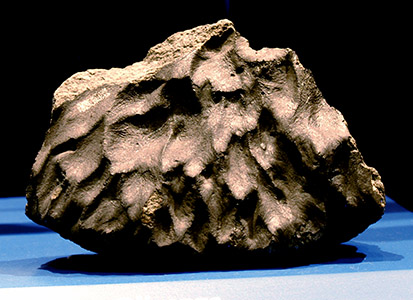

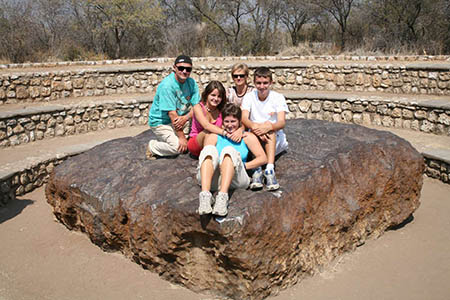
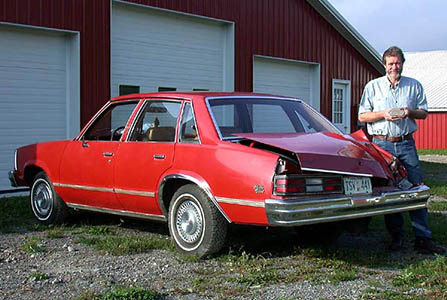
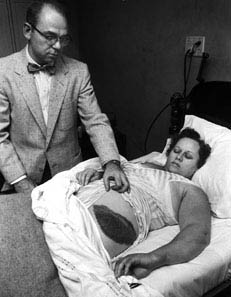

 x
x

